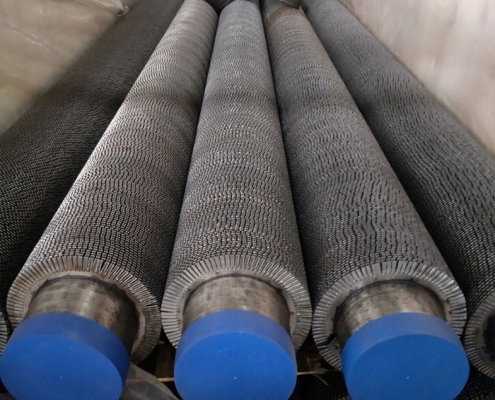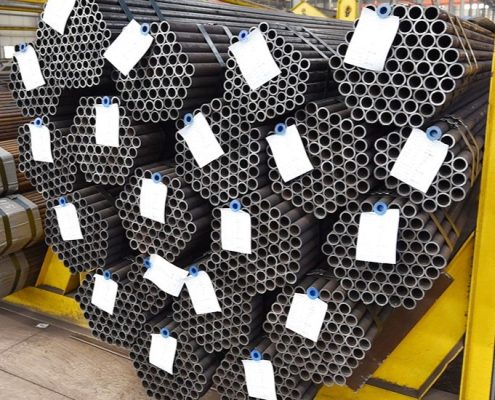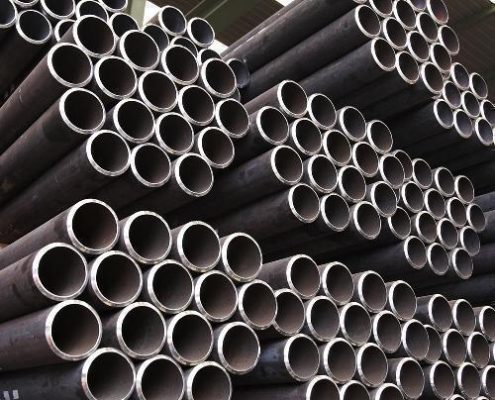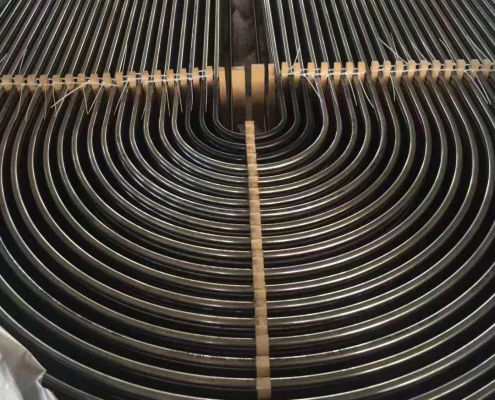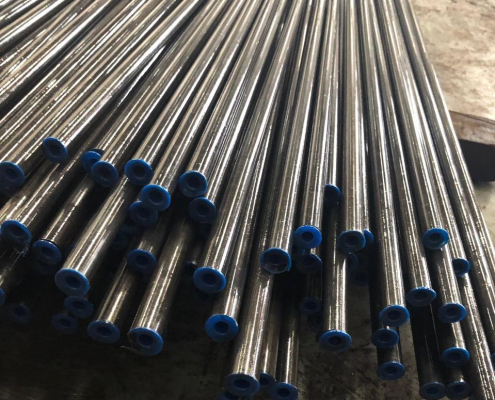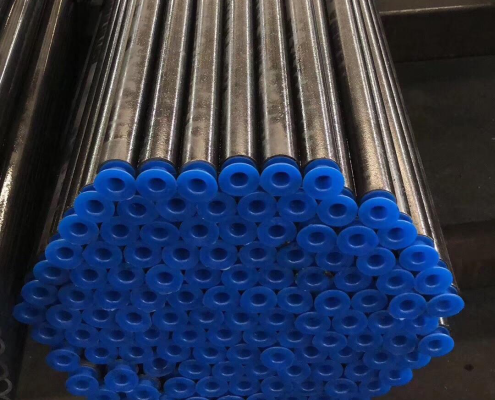Future Energy Steel manufactures and supplies high-quality Boiler Tube, Heat Exchanger Tube, Condenser Tube, Economizer Tube, Air Preheater Tube, and Superheater Tube, adhering to ASTM and EN standards. These high-strength, durable tubes offer exceptional oxidation resistance and organizational stability, making them ideal for high-pressure, high-temperature, and low-temperature applications. Our product range includes ASTM A210 seamless carbon steel, ASTM A179 cold-drawn heat exchanger tubes, ASTM A192 high-pressure carbon steel boiler tubes, ASTM A213 alloy steel boiler and superheater tubes, and EN 10216-2 seamless carbon and alloy steel tubes. For tailored solutions to meet your specific requirements, contact [email protected] today.
FAQs
What is the Difference Between a Boiler and a Heat Exchanger?
A boiler and a heat exchanger are used in heating systems but serve different functions and operate in distinct ways. Here’s a detailed comparison:
Purpose:
Boiler: Primarily for generating steam or hot water for heating and industrial applications.
Heat Exchanger: This transfers heat between two fluids for temperature control.
Operation:
Boiler: Involves combustion or electric heating to produce steam.
Heat Exchanger: Involves heat exchange between two separate fluids without combustion.
Applications:
Boiler: Used in heating systems, steam generation, and power plants.
Heat Exchanger: Used in various industries for heating, cooling, and temperature control.
What Are the Applications of Boiler and Heat Exchanger Tubes?
Boiler and heat exchanger tubes are critical components in various industrial applications due to their ability to withstand high temperatures and pressures. Their primary purpose is to transfer heat efficiently in different systems. Here’s an overview of their applications:
Boiler Tube Applications
Boiler tubes are used in systems that generate steam and heat. They are integral to various industrial and power generation processes.
Power Plants
Steam Boilers: Boiler tubes generate steam by heating water in power plants. The steam drives turbines to produce electricity.
Superheaters: These tubes increase the temperature of steam produced in boilers to improve the efficiency and output of turbines.
Industrial Boilers
Manufacturing: Boilers provide steam or heat required for production in manufacturing processes, such as chemical plants, paper mills, and food processing.
Refineries: Used in petrochemical and oil refineries to provide the necessary heat for various processes.
Marine Boilers
Used on ships to provide steam for propulsion and other onboard systems.
Heating Systems
District Heating: Boiler tubes are used in district heating systems to distribute heat to residential and commercial buildings.
Central Heating Systems: Provide heat to large buildings and complexes, including hospitals and universities.
Heat Exchanger Tube Applications
Heat exchanger tubes are used in systems where heat needs to be transferred between two fluids. These applications span various industries.
HVAC Systems
Air Conditioning: Heat exchanger tubes transfer heat between refrigerants and air, aiding in cooling.
Heating: Used in heat exchangers to transfer heat from hot fluids to air or water for space heating.
Chemical and Petrochemical Industries
Process Cooling and Heating: Heat exchangers cool down or heat up process fluids to the required temperatures.
Condensers and Evaporators: In chemical processing plants, they help condense vapors or evaporate liquids.
Oil and Gas Industry
Refinery Heat Exchangers: Used to transfer heat between hydrocarbons and other process fluids in oil refineries.
Gas Processing: Employed in natural gas processing plants for cooling and heating during liquefaction and gasification processes.
Power Generation
Condensers: In power plants, heat exchanger tubes are used in condensers to convert steam back to water after it passes through turbines.
Feedwater Heaters: Preheat the water before it enters the boiler, increasing the efficiency of power plants.
Food and Beverage Industry
Pasteurization: Heat exchangers heat and cool liquids like milk and juice quickly in the pasteurization process.
Brewing and Fermentation: Maintain specific temperatures during the brewing and fermentation processes.
Automotive Industry
Radiators: Heat exchanger tubes transfer heat from engine coolant to the air in radiators, keeping engines at optimal operating temperatures.
What Are the Standards for Boiler and Heat Exchanger Tubes?
Boiler and heat exchanger tubes are crucial components in various industries, such as power generation, chemical processing, and oil refining. The standards for these tubes ensure their reliability, efficiency, and safety under high temperatures and pressures. Here are some of the most common standards for boiler and heat exchanger tubes:
Boiler Tube Standards
ASTM Standards:
ASTM A178: This standard covers electric-resistance-welded carbon steel and carbon-manganese steel boiler and superheater tubes.
ASTM A192: Specification for seamless carbon steel boiler tubes for high-pressure service.
ASTM A210: Specification for seamless medium-carbon steel boiler and superheater tubes.
ASTM A213: Specification for seamless ferritic and austenitic alloy-steel boiler, superheater, and heat-exchanger tubes.
ASTM A335: Specification for seamless ferritic alloy-steel pipe for high-temperature service.
ASME Standards:
ASME SA-192: Similar to ASTM A192, used for seamless carbon steel boiler tubes.
ASME SA-213: Similar to ASTM A213, used for alloy-steel boilers and superheater tubes.
EN Standards:
EN 10216-2: This standard covers seamless steel tubes for pressure purposes, focusing on non-alloy and alloy tubes with specified elevated temperature properties.
EN 10217-2: Welded steel tubes for pressure purposes, covering electrically welded non-alloy and alloy steel tubes with specified elevated temperature properties.
Heat Exchanger Tube Standards
ASTM Standards:
ASTM A179: Specification for seamless cold-drawn low-carbon steel heat exchanger and condenser tubes.
ASTM A249: Specification for welded austenitic steel boiler, superheater, heat exchanger, and condenser tubes.
ASTM A269: Specification for seamless and welded austenitic stainless steel tubing for general service.
ASTM A789: Specification for seamless and welded ferritic/austenitic stainless steel tubing for general service.
ASME Standards:
ASME SA-179: Similar to ASTM A179, covering seamless cold-drawn low-carbon steel tubes.
ASME SA-249: Similar to ASTM A249, covering welded austenitic steel tubes.
ASME SA-269: Similar to ASTM A269, covering stainless steel tubing for general service.
EN Standards:
EN 10216-5: Seamless steel tubes for pressure purposes, focusing on stainless steel tubes.
EN 10217-7: Welded steel tubes for pressure purposes, focusing on stainless steel tubes.
What is Boiler Tube?
A boiler tube is used to construct boilers, devices designed to generate steam or hot water for industrial and commercial applications. Boiler tubes are crucial components that contribute to the boiler system’s efficiency, safety, and longevity. They are specifically engineered to withstand high temperatures, pressures, and various corrosive conditions encountered in the boiler environment.
Types of Boiler Tubes
Boiler tubes are generally classified into two main categories based on their application and design:
Fire-Tube Boiler Tubes:
Design: In fire-tube boilers, the hot gases produced by combustion pass through tubes surrounded by water
Application: These are typically used in small—to medium-sized industrial and commercial settings for low—to medium-pressure applications.
Advantages: Fire-tube boilers are more straightforward to design, easier to maintain, and cost-effective for specific applications.
Water-Tube Boiler Tubes:
Design: Water flows through tubes heated externally by combustion gases in water-tube boilers.
Application: These are used in large-scale power plants and industrial applications where high-pressure and high-temperature steam is required.
Advantages: Water-tube boilers are more efficient, can handle higher pressures, and produce steam at higher temperatures than fire-tube boilers.
What is Heat Exchanger Tube?
A heat exchanger tube is a heat exchanger component, a device designed to transfer heat between two or more fluids. These tubes play a critical role in heat exchange by allowing efficient thermal energy transfer while separating the fluids physically. Heat exchanger tubes are essential in various industrial, commercial, and residential applications, contributing to energy efficiency and process optimization.
Types of Heat Exchanger Tubes
Heat exchanger tubes come in several types, each suited for specific applications and operating conditions:
U-Tube Heat Exchanger Tubes:
Design: It is shaped like a “U,” allowing for thermal expansion without stressing the tube sheet.
Application: Used in high-pressure applications where differential expansion between the tubes and shell can occur.
Straight Tubes:
Design: Simple, straight tubes that are easy to clean and maintain.
Application: Commonly used in shell and tube heat exchangers for liquid-to-liquid or gas-to-liquid heat exchange.
Finned Tubes:
Design: Tubes with extended surfaces or fins to increase the surface area for heat transfer.
Application: Used in applications requiring enhanced heat transfer, such as air-cooled heat exchangers.
Double-Wall Tubes:
Design: Two concentric tubes are used to prevent cross-contamination between fluids.
Application: Used in critical applications where leak prevention is paramount, such as in the food and beverage or pharmaceutical industries.
What is Superheater Tube?
A superheater tube is a critical component of a boiler system used in power plants and industrial applications to increase the efficiency and output of steam engines and turbines. The primary function of superheater tubes is to convert saturated steam (steam that is in equilibrium with water) into superheated steam by further heating it beyond its boiling point. This process increases the thermal energy of the steam, allowing it to do more work when used in turbines for electricity generation or other industrial processes. Here’s an in-depth look at superheater tubes:
Types of Superheaters
Radiant Superheaters: Positioned in the boiler’s luminous zone, they are directly exposed to the furnace’s radiant heat. They experience high temperatures and contribute significantly to steam superheating.
Convection Superheaters: Located in the path of the flue gases after passing through the radiant zone, these rely primarily on convective heat transfer to superheat the steam.
Combined Superheaters: Utilize radiant and convective heat transfer methods to achieve the desired steam temperature.
What is Condenser Tube?
A condenser tube is a heat exchanger tube that transfers heat from one medium to another. It is typically found in systems where heat must be dissipated, such as in power plants, refrigeration, air conditioning systems, and various industrial processes.
Function:
Heat Transfer: Condenser tubes facilitate heat transfer from a gas or vapor to a cooling medium, often water or air. The primary purpose is to condense the gas or vapor back into a liquid state.
Cooling: In many systems, condenser tubes cool the working fluid after it has completed its job in a cycle (e.g., steam in a power plant).
What is Economizer Tube?
An economizer tube is a component in boilers and heat recovery systems that improves the overall efficiency of the system by preheating the feedwater before it enters the boiler.
Function:
Heat Recovery: Economizer tubes capture residual heat from the flue gases (exhaust gases) leaving the boiler. This heat is then used to preheat the boiler feedwater, which reduces the energy required to bring the water up to the boiling point.
Efficiency Improvement: By utilizing waste heat, the economizer reduces fuel consumption and increases the boiler system’s overall efficiency.
What is ND STEEL Tube?
ND Steel Tube refers specifically to tubes made from 09CrCuSb steel, known for its excellent corrosion resistance, particularly in sulfuric acid environments.
Features:
Corrosion Resistance: 09CrCuSb steel has superior corrosion resistance, especially in sulfuric acid-containing environments, making it suitable for use in the chemical and petrochemical industries.
High Strength: This steel offers high mechanical strength, allowing it to perform well under high-pressure conditions.
Heat Resistance: It maintains its properties at elevated temperatures, crucial for heat and high-pressure applications.
Durability: The combination of its corrosion resistance and mechanical strength results in a long service life, reducing the frequency of replacements and maintenance.
Chemical Composition:
Carbon (C): 0.08-0.12%
Chromium (Cr): 0.70-1.10%
Copper (Cu): 0.20-0.40%
Sulfur (S): 0.02-0.05%
Antimony (Sb): 0.015-0.025%
Iron (Fe): Balance
Mechanical Properties:
Tensile Strength: ≥490 MPa
Yield Strength: ≥295 MPa
Elongation: ≥22%
Impact Energy: ≥47 J (at room temperature)
Can Boiler and Heat Exchanger Tubes be Finned?
Yes, boiler and heat exchanger tubes can be finned, and this is a common practice to enhance their heat transfer efficiency. Finned tubes are designed to increase the surface area available for heat exchange, which improves the overall performance of the heat transfer equipment.

